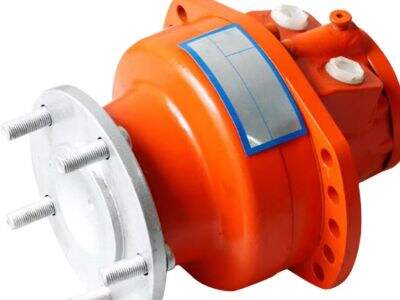Etiam sonora esse possunt, et multis difficile erit causam reperire. Sed cum iusta informatione et instrumentis, non oportet te cum strepitu vivere. Sunt complures causae quarum grata strepitus esse potest, sive de motore partibus, tubis, oleo, sive etiam de inpropieta installatione agitur. Causas quasdam frequentiores recenseremus cur hydraulici motores mugire solent, simulque aliqua consilia proponemus quomodo diagnoscere et remedium adhibere incipias. Etiam tractabimus quomodo bona cura et emendationes ad iuvandum strepitum minuendum valeant.
Strepitus in hydraulico motore rotatorio est frequentissimus sed non unicus problema typus in eis repertus
Cum omnia ex aere in lineis ad partes usas ad liquidum hydraulicon sordidum sonos generare. Forte audiendi sunt fuga aeris, quae sibilum aut ululatum habebit. Partes usae, ut rotula aut obsignationes, sonitum frictonis aut stridorem creare possunt. Si liquidum hydraulicon inquinatum fuerit, pulsus aut fractus soni audiri possunt cum motore agitur. Causas hasce typicas intellegere tibi potest adiuvare ut diagnosces tuas motor impulsus hydraulicus nutationes sonoras magis efficaciter.
Haec sunt aliqua modo diagnoscendi et emendandi sonum motoris hydraulici:
cave ne qua damna sint, ausculta ne qua soni anormales sint, et custodi ne qua maintenance regularis sit. Ipsum motorem inspice pro effusionibus, cavis, aut damno physico ut problemata potiantur. Ausculta ne qua soni anormales sint, ut frendere, pulsare aut ululare, quae possunt indicare problemata specifica intra motorem. Saepius, maintenance prima — ut liquidi hydraulici mutationem et inspectionem partium usarum — potest ante occupare problemata sonorum antequam oriantur.
Cura ut mutorum motorum hydrauliciarum sonus per opportuna mutorum et emendationes bene tractetur, clavis est ut a motore tuo praestantem ministerium percipias.
Hydraulici liquidi substitutione ratione temporis, signis lacerationis in sigillis et axibus explorandis, ac nexibus laxatis constringendis, vitare potes ne soni molesti emergant. Sin tamen problemata exsurgant, celeriter eos corrigere est necesse, ne damnum maius motori inferatur. Molestiam sibi parare potes et tuum motor hydro propulsor perspicue et silenter operari poteris si consiliis de mutorum cura adhaereas et statim sonorum difficultatibus insistas.
Ut soni volumen motorum hydrauliciarum minuatur, usus cohibendi sonos, motus mitigandi fixurae, aut motorii dispositio ipsa adhiberi possunt.
Materiae insulations sonorae (e.g. spongia aut pulvillus) possunt minuere strepitum absorbendo vibrationes sonoras. Implantatio motus absorbentis vibrationes isolat motorem a reliqua parte ad minuendos motus et strepitum. Muta configurationes motorem, sicut celeritas aut pressio, etiam esse potest modus leniendi strepitum. His methodis, efficaciter minuere strepitum motor impulsus hydraulicus , et creare atmosphaeram quietam in loco operis.
Index Rerum
- Strepitus in hydraulico motore rotatorio est frequentissimus sed non unicus problema typus in eis repertus
- Haec sunt aliqua modo diagnoscendi et emendandi sonum motoris hydraulici:
- Cura ut mutorum motorum hydrauliciarum sonus per opportuna mutorum et emendationes bene tractetur, clavis est ut a motore tuo praestantem ministerium percipias.
- Ut soni volumen motorum hydrauliciarum minuatur, usus cohibendi sonos, motus mitigandi fixurae, aut motorii dispositio ipsa adhiberi possunt.

 EN
EN
 AR
AR BG
BG CS
CS DA
DA NL
NL FI
FI FR
FR DE
DE HI
HI IT
IT JA
JA KO
KO PL
PL PT
PT RU
RU ES
ES SV
SV TL
TL IW
IW ID
ID SR
SR SK
SK SL
SL UK
UK VI
VI GL
GL MT
MT TH
TH TR
TR FA
FA AF
AF MS
MS GA
GA HY
HY EU
EU LA
LA MI
MI NE
NE MY
MY